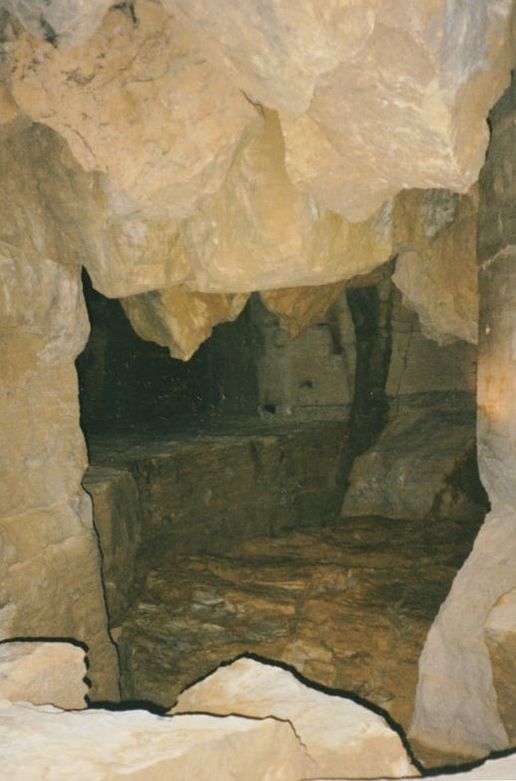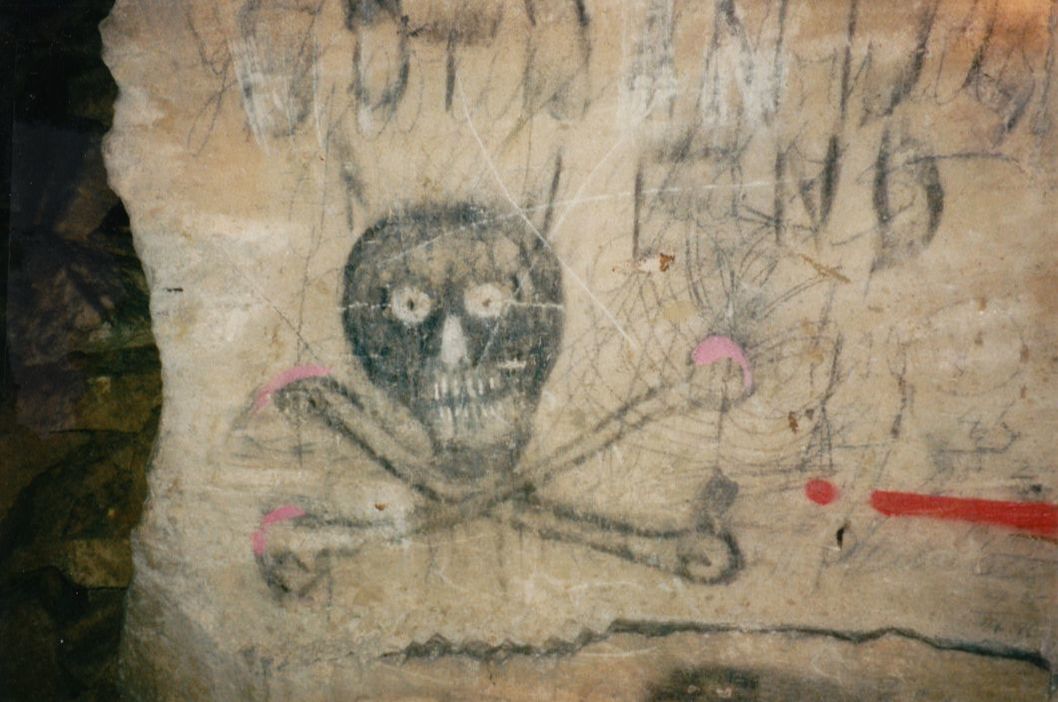|
Box Quarries in the Year 2000
Mike Breakspear Reproduced by kind permission of the author from Box at the Millennium: A Record of the Civil Parish in 2000 The freestone quarries at Box, mostly underground workings, were a major source of income for the local people for many years in the 19th and 20th centuries. The work was very labour-intensive and as wages rose the natural building stone became too expensive for everyday use. Gradually reconstituted stone made from cement and stone dust took over from the real thing and the quarries began to close, the last one in Box closing in 1968. Nowadays as people have become generally more affluent, the use of natural materials has become popular again and several underground quarries have re-opened in the neighbourhood though not in Box parish. The removal of the stone, manually, using hand saws, picks and iron bars, has left something like 50 miles of passage varying in size from crawlways to huge caverns. The constant temperature underground of around 10 deg C has made the workings attractive to bats as a roost and hibernation location. Right: Entrance to inner tunnels in the year 2000 (courtesy Carol Payne) |
Bat numbers are declining and Box underground workings are internationally important for their conservation. Seven different species roost there. These are the Long Eared Bat, Natterers Bat, Lesser and Greater Horseshoe Bats, Whiskered Bat, Brandt's Bat and Daubentons Bat. ln autumn the very rare Bechstein's Bat and the Serotine Bat, together with those previously mentioned use the workings for autumnal swarming.
Monitoring of the numbers and welfare of the bats is led and co-ordinated by lan Davidson-Watts (Wiltshire Bat Worker and English Nature Conservation Officer in Hampshire) of the winter and summer roosts. During the winter around 300 bats are counted in ten of the fifty miles of passages.
Bat workers are not the only ones to take an interest in the hidden side of Box. During the last decade a team from the Shepton Mallet Caving Club have been surveying the 50 miles of accessible passage and the maps have been published on three sheets, the North, Central and Southern regions. The surveying method used involved measuring angles with a prismatic compass and lengths with a 30-metre survey tape. The readings were fed into a computer programme written for the purpose and a plan can then be plotted at any scale. The maps differentiate between types of passage and show many items of interest to the industrial archaeologist such as cranes, trucks and rails.
Monitoring of the numbers and welfare of the bats is led and co-ordinated by lan Davidson-Watts (Wiltshire Bat Worker and English Nature Conservation Officer in Hampshire) of the winter and summer roosts. During the winter around 300 bats are counted in ten of the fifty miles of passages.
Bat workers are not the only ones to take an interest in the hidden side of Box. During the last decade a team from the Shepton Mallet Caving Club have been surveying the 50 miles of accessible passage and the maps have been published on three sheets, the North, Central and Southern regions. The surveying method used involved measuring angles with a prismatic compass and lengths with a 30-metre survey tape. The readings were fed into a computer programme written for the purpose and a plan can then be plotted at any scale. The maps differentiate between types of passage and show many items of interest to the industrial archaeologist such as cranes, trucks and rails.
|
The maze of passages is very complex and it would be unwise for anyone who is not familiar with the routes and who is not properly equipped to venture underground. Over the years the underground quarries gradually deteriorate as a piece of roof or a wooden prop gives way, but this is a very slow process and this unique part of the heritage of Box could remain with us for the foreseeable future.
Thanks are due to lan Davidson-Watts for information on bats and to Nick Beckett for details of the survey. The entrances to the quarries have been closed. Please do not try to enter. |

